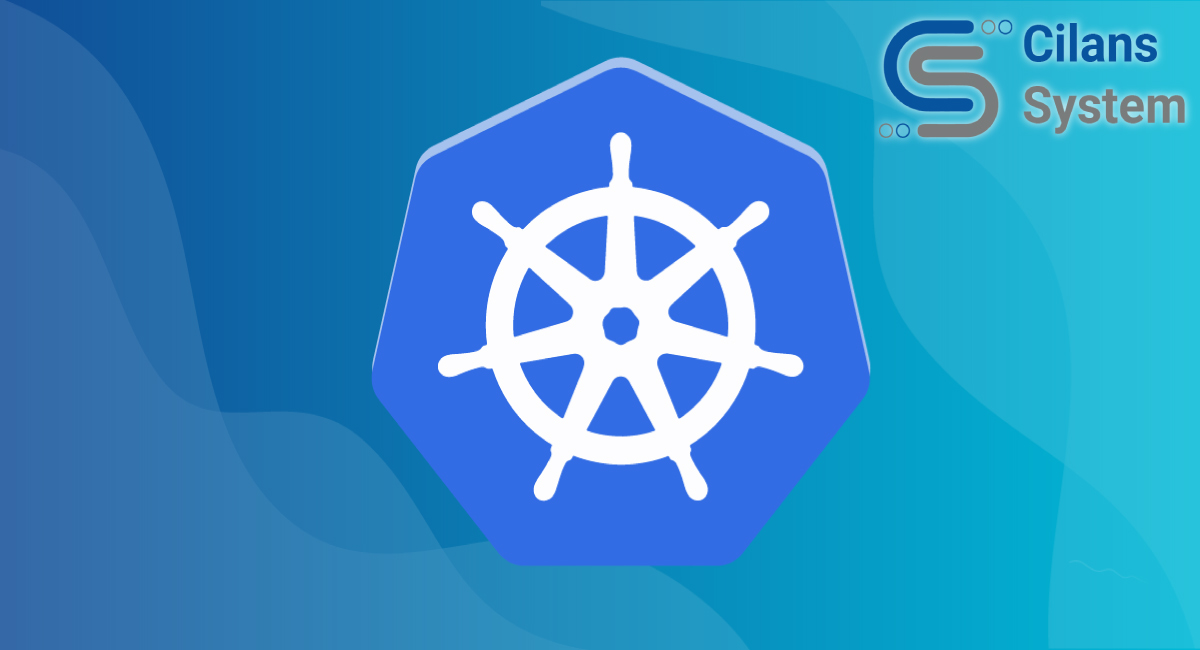
Overview and Usecases of ChatGPT
March 29, 2023
Alteryx: The All-in-One Self-Service Analytics Platform
April 26, 2023What is DevOps?
DevOps is a set of practices that combines software development (Dev) and IT Operations (Ops) to improve collaboration and communication between the two teams.

In other words, DevOps is an umbrella term that describes the operation of a team collaborating throughout an entire programming production process – from the design through the development stages.
The goal of DevOps is to create a culture of collaboration, continuous improvement, and automation to deliver software faster, more reliably, and with fewer errors.
Principles of DevOps
- Automation
- Automation can help reduce errors & increase consistency in the software development.
- Contiuous Integration & Continuous Delivery (CI/ CD)
- Continuous Integration is the process of automatically building & testing code changes as soon as they are committed to the code repository.
- Continuous delivery is the process of automatically deploying code changes to production environments as soon as tehy pass testing.
- Monitoring & Logging
- By monitoring application & infrastructure performance, operations teams can identify issues before they become critical, and trubleshoot problems quickly.
- By logging application & infrastructure activity, organizations can track changes & trouble shoot issues after they occur.
What is DevOps Lifecycle?
- Continuous Development:
- This practice spans the planning and coding phases of the DevOps lifecycle.
- Continuous Integration:
- This software engineering practice develops software by
- frequently integrating its components.
- This allows developers to catch errors & bugs early in the development process, when they are easier & less expensive to fix.
- Continuous Testing:
- Incorporates automated, prescheduled, continued code tests as application code is written or updated.
- Continuous Deployment:
- The deployment process takes place continuously in this DevOps lifecycle phase. It is performed so that any changes made in the code should not affect the functioning of a high traffic website.
- Continuous Monitoring:
- During this phase, developers collect data, monitor each function, and spot errors like low memory or server connection are broken.
- Continuous Feedback:
- The software automatically sends out information about performance and issues experienced by the end-user. It’s also an opportunity for customers to share their experiences and provide feedback.
- Continuous Operations:
- It also involves automating the application’s release and all these updates that help you keep cycles short and give developers and provide more time to focus on developing.
Benefits of DevOps
- Continuous delivery of software
- Better collaboration between teams
- Easy deployment
- Better efficiency & scalability
- Errors can be fixed at initial stage
- Better security
DevOps Tools
- Source code management

- Git is a popular version control system used for managing the source code.
- Supports non-linear development.
- Used to collaborate on code.
- Challenges before Git
- No collaboration.
- Versions are not maintained properly.
- Time consuming.
- In case the server crashes, there is no chance of recovery.
- Solution to Challenges
- Team Collaboration.
- Versions of software are documented & maintained accurately.
- Saves time.
- Easy to use.
- Automatic Backups.
- Architecture of Git
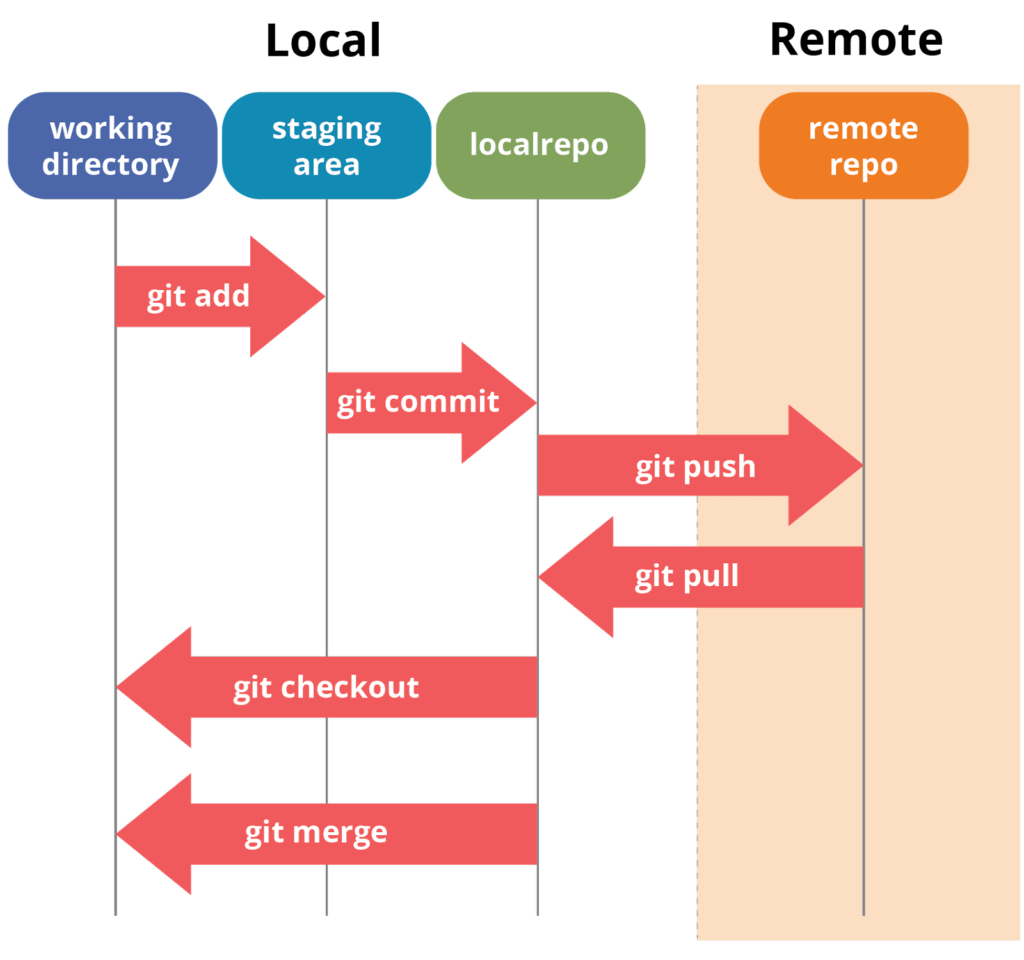
- What does Git do?
- Manage projects with repositories.
- Clone a project to work on a local copy.
- Control & track changes with Staging & Committing.
- Branch & Merge to sllow for work on different parts & version of a project.
- Pull the latest version of the project to a local copy.
- Push local updates to the main project.
- Continuous Integration

- Jenkins is an open source continuous integration tool. It helps to automate continuous development, testing & deployment of newly created codes.
- Jenkins can be extended via plugins.
- It is wasily distributed across multiple machines.
- Challenges before Jenkins
- Developers had to wait till the software was built for test results.
- Lack of continuous feedback resulted in a lot time consumption.
- Delivery of software was delayed.
- Architecture of Jenkins
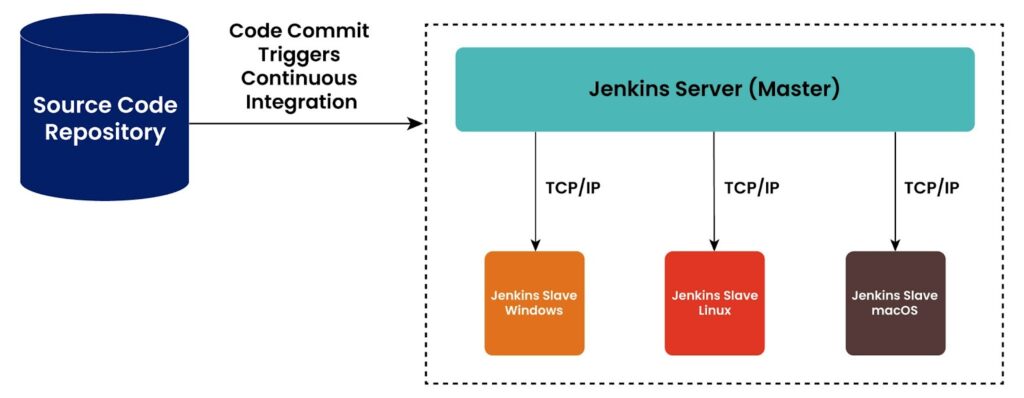
- Continuous Deployment

- Docker is an OS-level virtualization software platform that enables developer & IT administrators to create, deploy & run applications in a Docker Container with all their dependencies.
- Before Docker:
- In a virtual machine, only 10 mGB of memory is consumed whereas the remaining 6 GB of unused memory cannot be utilized again.
- After Docker:
- With Docker, when 10 GB of memory is used, the remaining 6GB of memory can be reused for a new container.
- Architecture of Docker
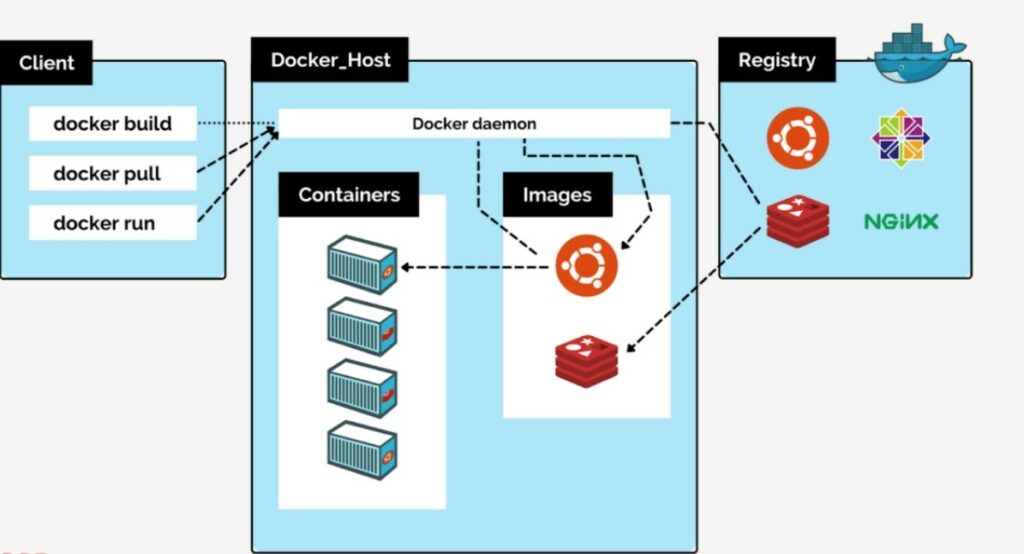
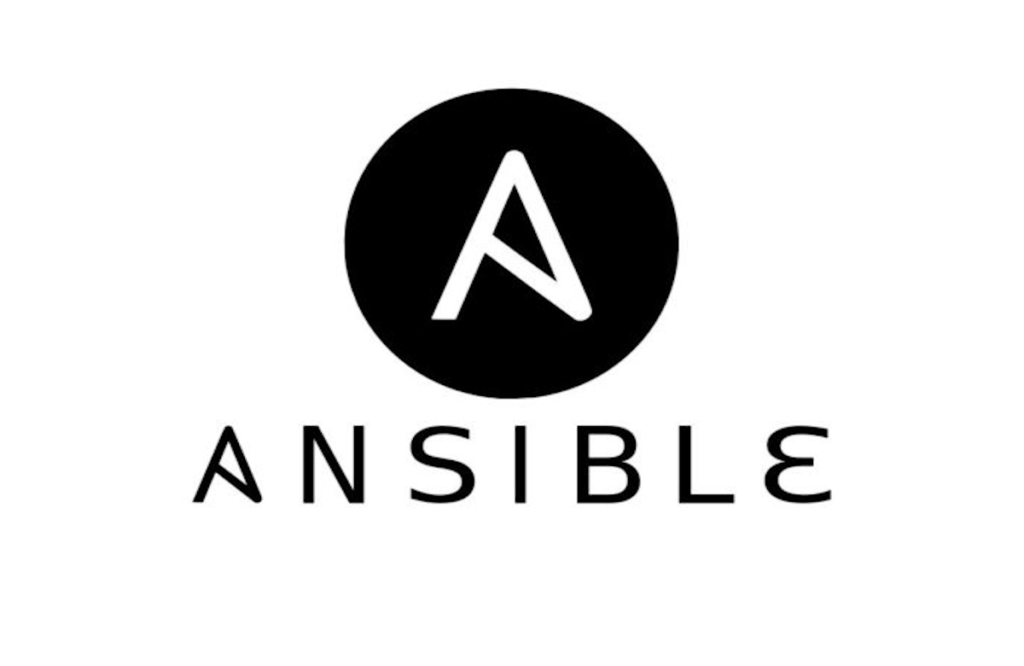
- Ansible is a configuration management tool where applications are deployed automatically on a variety of environments.
- With Ansible, a code is written once for the installation & deployed multiple times.
- Also, it uses SSH for secure connections.
- It is a push based configuration tool.
- Architecture of Ansible

- Continuous Build & test

- Maven is a automation tool which helps to build & manage software projects within a short period of time.
- It gives instant access to new features with no additional configurations.
- It supports parallel builds.
- Challenges before Maven
- For each project you need to keep adding a set of Jars.
- Even a minor mistake in the structure of servlet doesn’t give the right output.
- Building & deploying a project takes up a lot of time.
- Solution to Challenges
- Maven has live templates in its central repository. So, a user has to declare only the dependencies that he requires.
- Maven will be downloaded & deploy the dependencies with the application.

- Selenium is an open source automation tool which is used for testing web applications. It is mainly used for regression & functional testing.
- It allows scripting in several languages.
- It supports parallel test execution.
- Architecture of Selenium

- Continuous Monitoring

- Nagios is an open source tool which is used to monitor systems, servers, networks and infrastructure.
Agile Model V/S Waterfall Model V/S DevOps
What is Waterfall Model?
- The waterfall model is a linear sequential software development process, in which the development activities are divided into sequential phases, and each phase must be completed before moving onto the next one.
- The model is called waterfall because the process flows downward, like a waterfall, through each phase.
- The waterfall model has five phases, which include requirements analysis, design, implementation, testing, and maintenance. The model assumes that the requirements are clearly defined at the beginning of the project and that changes to requirements are rare and costly.
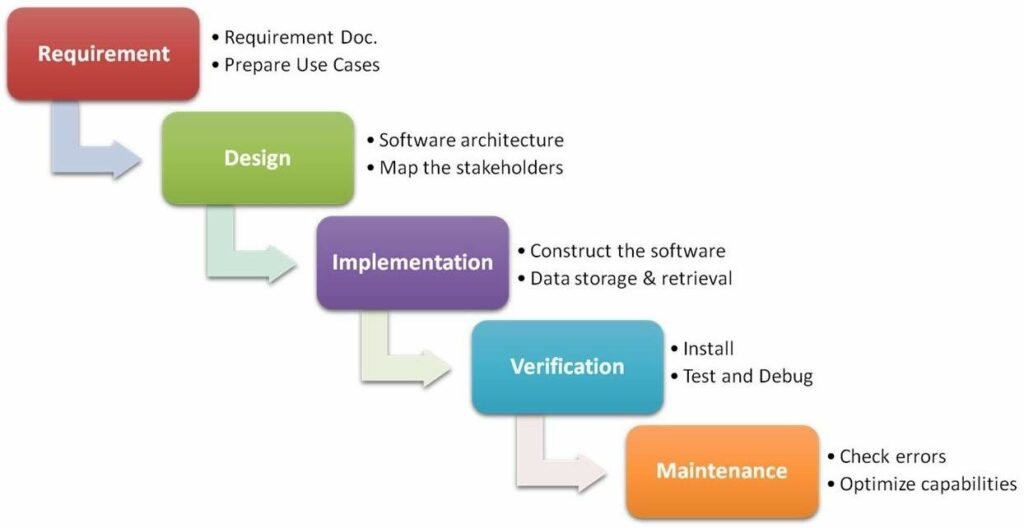
- This model is often used in projects with a well defined set of requirements & a fixed budget, timeline, & scope. The model provides a structured approach to software development, which can make it easier to manage and control the project.
- This model has been criticized for its lack of flexibility & adaptability to changing requirements & customer needs. As a result, newer software development models, such as the Agile model, have gained popularity in recent years.
What is Agile?
- Agile is an iterative & incremental software development methodology that emphasizes flexibility, adaptability, collaboration, & customer satisfaction. It focuses on delivering working software in shorter development cycles, typically two to four weeks, through continuous planning, testing & feedback.
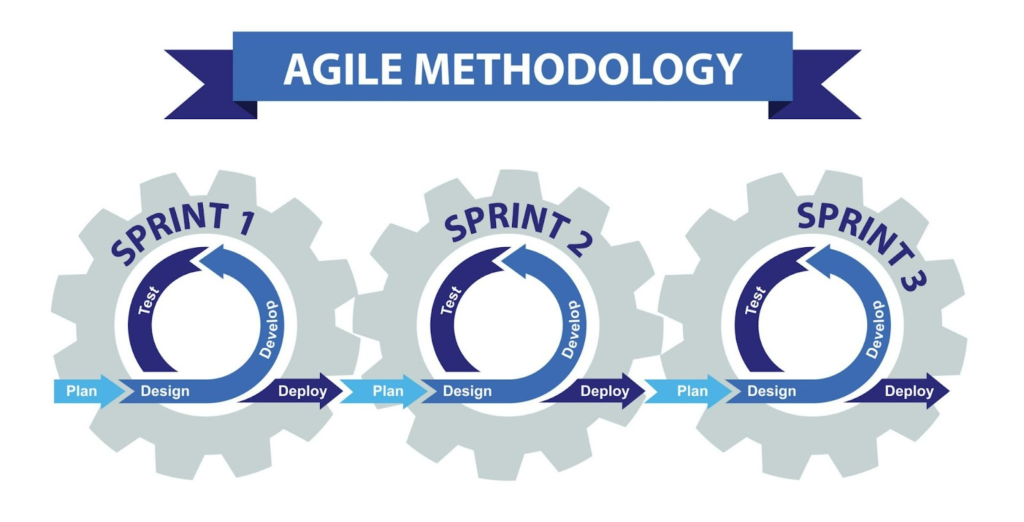
- Agile model promotes teamwork & collaboration between development teams, project managers, and stakeholders by breaking the software development process into smaller, more manageable chunks called sprints. Each sprint has a defines set of objectives, which are delivered in a working software increment at the end of the sprint.
- The Agile model has gained popularity in recent years due to its flexibility, faster time to market, and ability to handle rapidly changing requirements. It is used in various industries including software development, manufacturing, healthcare, and education.
What is DevOps?
- DevOps development involves breaking down silos between development and operations teams, and fostering a culture of continuous integration and delivery (CI/CD) through the use of automation tools and practices. By automating the software delivery process, DevOps aims to reduce the time and effort required to deploy new features and fixes to production, while also improving the quality of the software.

- DevOps has become increasingly popular in recent years due to the rise of cloud computing and the need for faster and more agile software delivery. It is used by a wide range of industries, including finance, healthcare, and technology, and has been shown to improve software quality, reduce time to market, and increase customer satisfaction.
Evolution

Conclusion
- In Conclusion, Devops has revolutionized the way software development & deployment are carried out in organizations. The adoption of Devops practices has led to increased collaboration, improved efficiency, faster time to market, and higher quality software products.
- By breaking down the silos between the development and operations teams, DevOps has enabled organizations to respond quickly to changing market demands and customer needs.
- Automation and continuous integration and delivery have also made it possible to deliver software faster and with fewer and with fewer errors.
- However, implementing DevOps is not without its challenges. It requires a significant cultural shift, as well as investments in tools, infrastructure, and training. It also requires a commitment to continuous improvement and a willingness to embrace change.
- Overall, the benefits of DevOps far outweigh the challenges, and organizations that successfully adopt DevOps practices stand to gain a competitive advantage in the marketplace. By prioritizing collaboration, automation, and continuous improvement, devops can help organizations achieve their business goals and deliver high-quality software products that meet the need of their customers.




